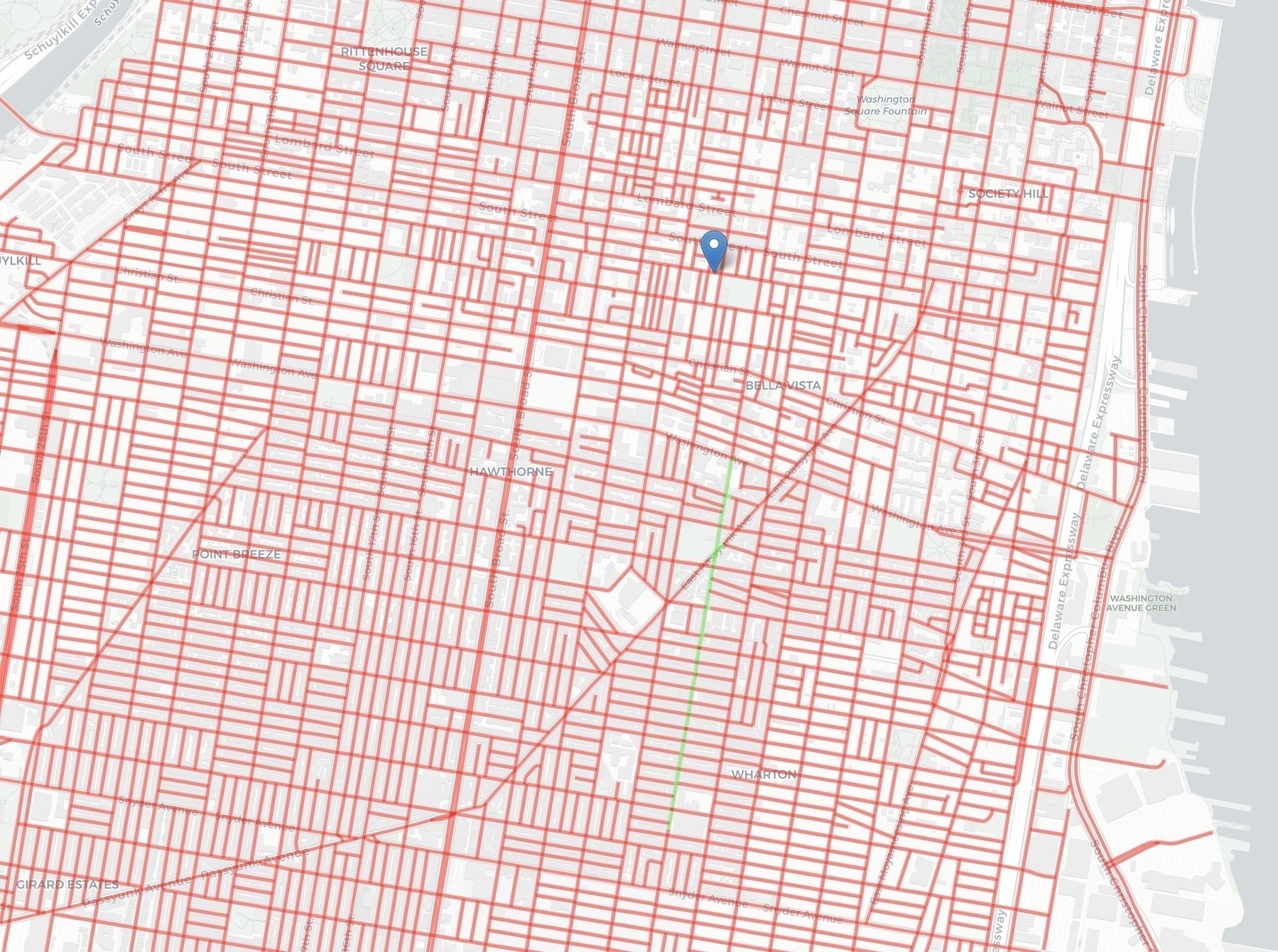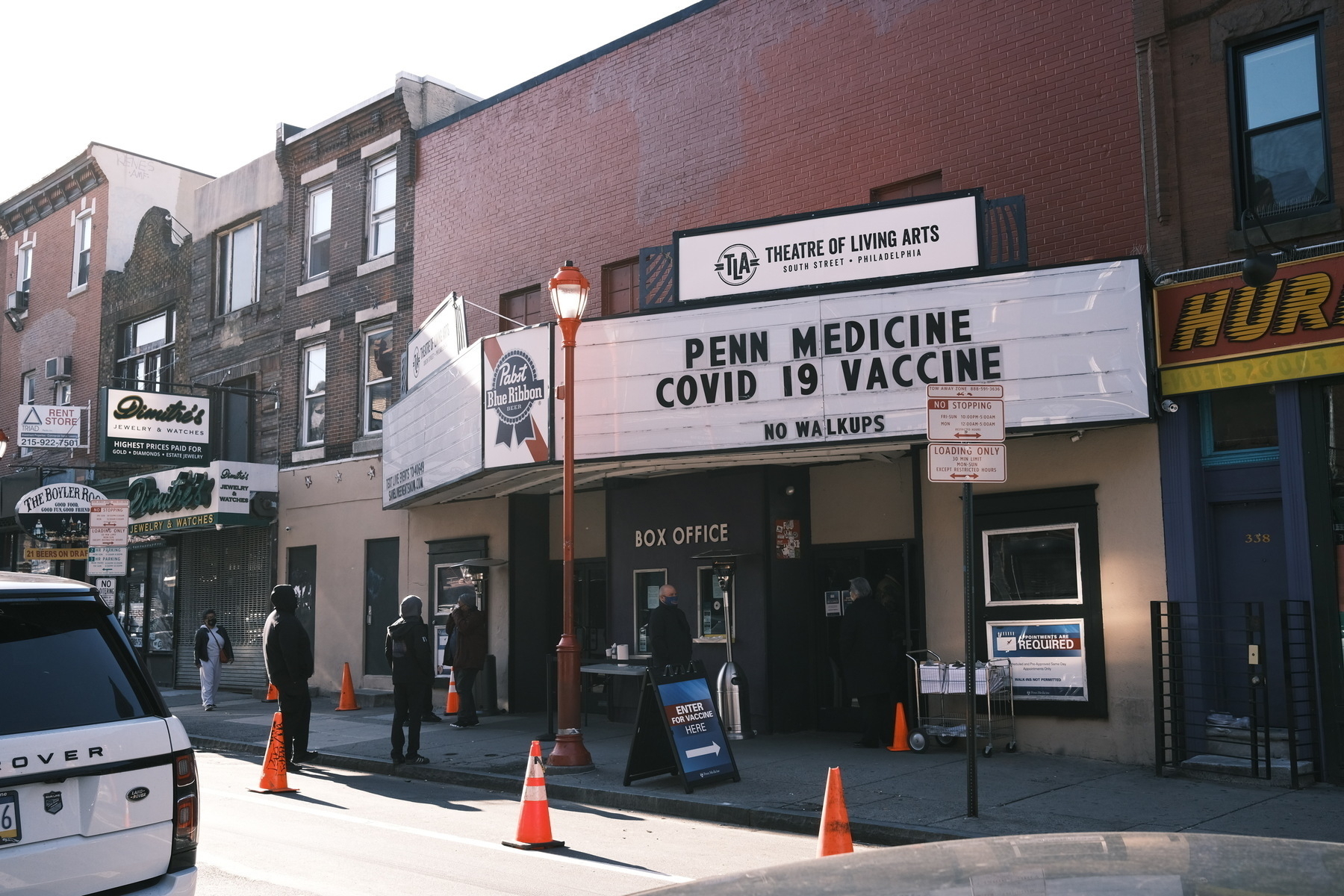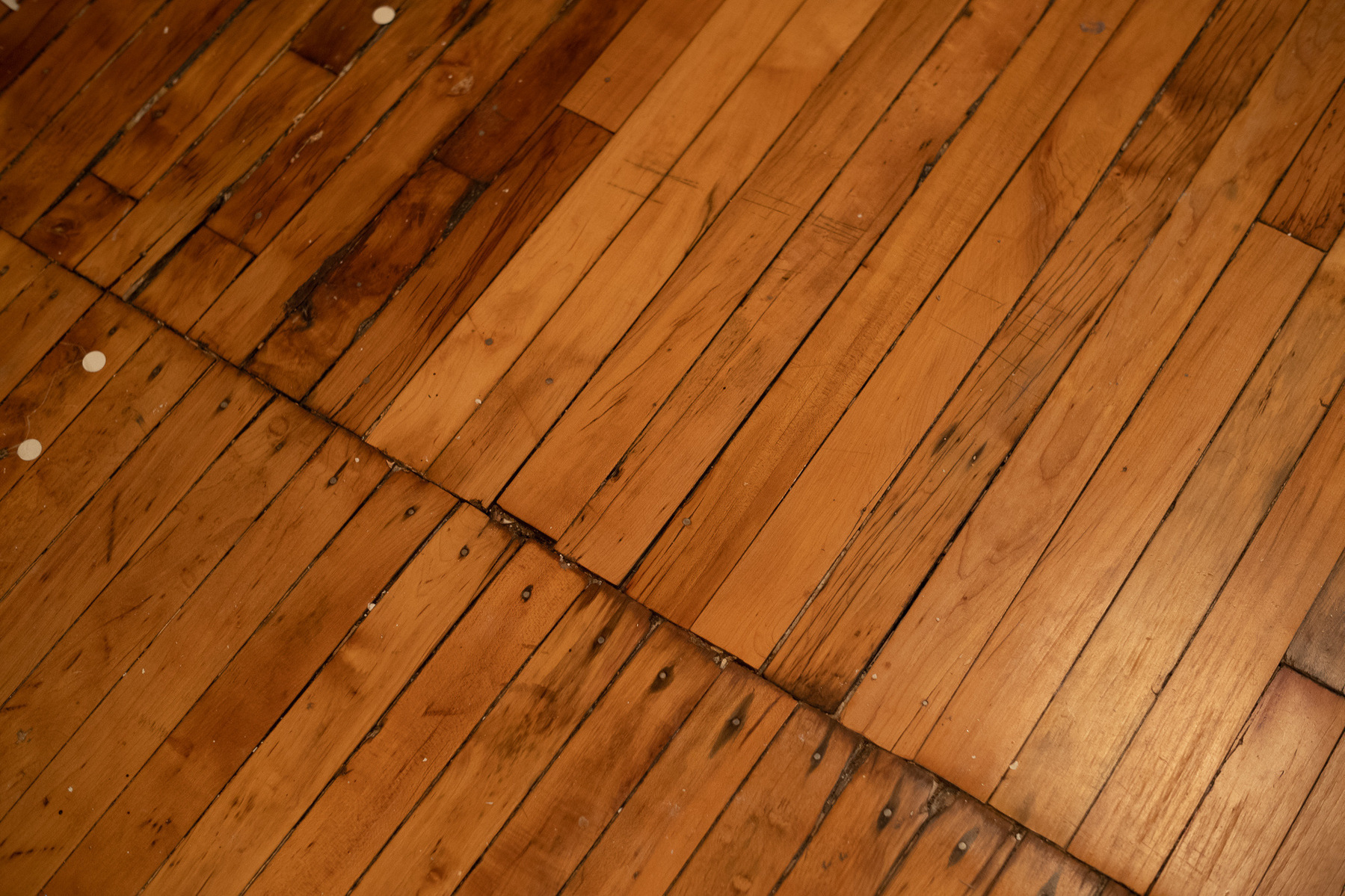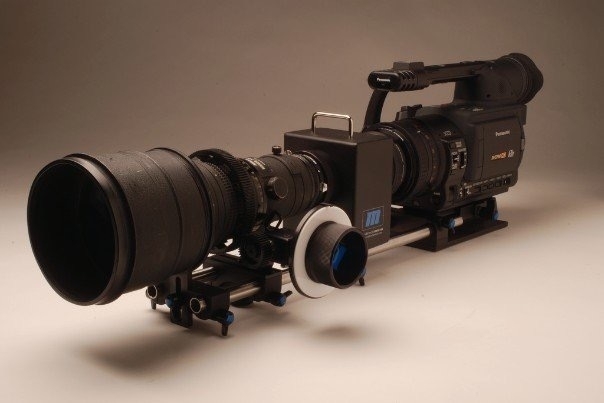-
My "12 Favorite Problems" (One Year Ago)
A year ago I took Tiago Forte course Building a Second Brain. If you’re ready to be done organizing forever because you’ve spent hundreds of hours designing complex systems that don’t work, I highly recommend BASB.
One early exercise was to write our 12 Favorite Problems.
These 12 Favorite problems are supposed to help focus and prompt me, but it appears I was in a philosophical mood. Not sure how focusing these questions are:
Why is suffering necessary? Why is violence necessary? Is competition possible without violence in some form? Do non-competitive people need to be protected from competitive people?
Do the ends justify the means?
Are there things that can’t be reduced to data or science? Do completely unknowable things have value? Perhaps more value than knowable things?
Can great things (in incredibly expensive fields) be achieved without opportunistic investment? Can resources be equitably distributed?
Why is privacy sacred (because it is)?
Can anything, even the most volatile, radioactive material, be diluted out with enough water? Can the deepest darkness actually be overwhelmed by the tiniest amount of light?
Can a human being actually help more than they hurt?
Does guilt and shame actually serve a useful purpose?
Which presumed “Rules of Nature” are actually just cultural/human-designed rules that can be changed/discarded?
Are there things that feel like suffering that are not, in fact, suffering?
Are people basically good? Is there a grain of good at the core of even the most evil acts?
If free will is the last bastion of magical thinking, does that change anything about how we must act?
Are these problems still my 12 Favorite Problems today? Mostly, I think, yes. But there are some more real, tangible problems that I explore in my day-to-day that might point toward these things.
These types of questions don’t seem to respond as well to direct inquiry.
-
The First Step
It has begun. I did the first short walk today with my friend and colleague Newton. I have a tendency to make projects bigger than they need to be, and I’ve done that here, but with an emphasis on ease and sustainability.
There are 2,215 miles of roads in Philadelphia, minus a few highways. So if I do a 4-5 mile walk 3 days a week for 3 years, I can easily walk every street. I plan to shoot one roll of film on each of the walks (that's a lot of rolls of film but I can develop and scan myself).
— Zach Phillips (100/100 posts) (@zachphillips) March 16, 2021Now, in addition to shooting a roll of film, I’m also wearing a GoPro. I just think it would be a cool hyperlapse to really quickly walk down every road in Philadelphia (I mean, come on, that would be cool) and it takes little effort other than to remember to charge the GoPro.
Then I realized that since I’m wearing a GoPro and walking with a friend, I may as well mic us both up running our separate wireless audio into the GoPro. This way if we have a cool conversation I could maybe use it for something later. I don’t know, a podcast?
And of course, since I have video of each walk, I could easily turn that video into little photo walk videos where when you hear the shutter you can then cut away to the picture that’s been taken.
Another thing I’ll need to have is a “calling card” I can give to people if I ask to take their portrait. This way they can go check out the project somehow, see if their portrait made it in. I have a very specific idea for this business card of course… More on that later.
You can see how this project is spiraling out of control, right?
Anyway, this is what’s wrong with me. But I think I’m actually doing this.
Look at that first little sprout of green… Can you see it?

Can you see it now? I’m gonna ALL that red to green. Just watch.

-
The Original Recipe: Authenticity
Here’s some more detail on the second core ingredient of story that we measure in my production house’s creative process. It’s the trickiest of all: Authenticity
It’s also the only ingredient that should never be compromised.
Here's how the Original Recipe™ process works: As you evaluate ideas (some do this during brainstorming, most wait until after), assign a number from 1 to 10 for each of these five "Core Ingredients" of effective story:
— Zach Phillips (100/100 posts) (@zachphillips) February 3, 2021
- Purpose
- Authenticity
- Conflict
- Spectacle
- NoveltyAuthenticity is about point of view. Who is telling this and why should I trust them? Vulnerability is not a core competency of Brands™ and when most of them “speak,” they sound like the most insufferable person you got stuck with at your table at the networking luncheon.
Vulnerability is a scary concept for marketers, and honestly it shouldn’t even be necessary here. The reason I go all the way to Vulnerability is because we usually start in a place that’s so far from Authenticity that if we aim for Vulnerability we might end up at Authenticity.
Everyone already knows your organization isn’t perfect. Everyone already knows you have an agenda, that you’re conflicted and struggling and don’t know what to do/who you are sometimes. But what are your real aspirations? How do you wish you were?
Fun fact: Who you most wish you were deep down is actually who you really are. Okay, back to marketing speak.
When I say authenticity is tricky, what I mean is that there can appear to be an incredibly sharp drop off a cliff from authentic to “phony garbage, instantly ignore.”
Politicians are the absolute worst at this, which is a problem because authenticity is increasingly the most important political currency. Voters are getting more and more sharply attuned to it.
These days, the most authentic-feeling (emphasis on “feeling”) candidate wins.
You can walk into a room, look someone in the eye, and almost immediately get a read on what their intentions are, whether they mean well or you just “have a bad feeling about them.” Cats to this too. Startle a cat and where does the cat look? Right at your eyes. To get a read.
I don’t have a uniform way to enhance any story’s level of Authenticity, but I can tell you that one way to ensure authenticity is to talk about something you’re passionate about (not yourself, as it’s scientifically impossible to be passionate about yourself).
This means to tell someone else’s story. To speak to the most exciting change you’re hopeful about. Saying how great you are leads only to one of three reactions:
Of course YOU think you’re great.
You don’t believe that.
Yuck.
Stop talking about yourself.
Start describing what you do and why you do what you do and notice what brings on the most emotion. What gets you fired up or choked up? Follow that feeling to your authentic point of view. That’s the place you must tell your story from.
-
Sensations and Stories of Sensations
I sometimes worry that I’ll never be able to reconnect with bodily sensations. I shut them down and out so hard for so long.
But I then I can realize that the worry is a bodily sensation and prove the worry false.
Today I was feeling a kind of resistance that is very familiar to me. It comes up whenever something I want to do lines up with something I must do.
Today I had this perfect set of tasks that fit neatly into all four quadrants of an idea I'm playing with called the Want/Must Matrix.
— Zach Phillips (100/100 posts) (@zachphillips) February 8, 2021
The counterintuitive thing I’m arguing is that the tasks that create the most resistance are those we both MUST do and WANT to do. 👇 pic.twitter.com/A3ppZncDjdI was able to let myself get past it this time simply by noticing the sensation. Not the story of the reason for the sensation, but just the sensation itself.
The story of the reason for the sensation is something like “As soon as I want to and must do something, a voice pops into my head, immediately applying thousands of pounds of pressure: I better do a good job. Underneath that voice is the whisper: ‘You aren’t good enough.’”
The story of the reason for the sensation is actually very helpful to understand, and the experience of the story itself is a kind of sensation, but I digress…
Thinking about/acknowledging the story can weaken it, but it can also strengthen it, unfortunately.
But noticing the sensation itself without the story—a tightness in the jaw, shallowness of breath, a sense of weight, heaviness, the desire to get the hell away from something unpleasant—really noticing it, I can sometimes break free from the power of that resistance.
Suddenly, I can find myself not only doing the thing I was resisting, but enjoying it. No negotiation, no dialogue, no fight. Simply noticing.
The bottom line, I think, is that a felt sense will always be more powerful, more interesting, more captivating than any language I can make up to describe it. Even a brilliant complex narrative will grow stale and bland and boring with time.
A sensation is always fresh, tingly.
-
Practical Paradoxes
A growing list of practical paradoxes.
The human fixation on bad things is strong evidence of our deepest goodness.
Constraints are necessary for freedom.
Pursuing happiness leads to less happiness.
Making everything easier makes everything harder.
Effort produces much less than non-effort produces.
Attempting to lose weight almost always leads to weight gain.
Focusing on quality over quantity leads to lower quality.
For a game to work, everyone needs to be invested in the game, meaning that they need to suspend their disbelief that it is a game. And every attempt at organizing or cooperating in the world is a game.
Speed of learning is limited only by how much one can slow down.
The best way to remember things is not to try to remember them.
The best way to achieve goals is to no longer care about them.
The only way to give up drug use/drinking/smoking is to stop trying to control them in any way.
Assuming that a choice can be rational is deeply irrational.
Free will is the last bastion of magical thinking, but there is no choice but to behave as though free will exists.
There is no predestination, but there is also no free will: This is equivalent to predestination.
Getting what one wants can only be truly achieved by not wanting it anymore.
Everything that you think is true has once and will once again be shown to be false.
The more someone hates someone else’s shortcoming, the more likely it is a shortcoming of their own.
The more willing one is to fail, the more likely one is to succeed.
The more one learns, the less one knows.
The more one keeps, the less one has.
-
A Twitter Thread of Threads
All of my daily microblog posts are also posted to Twitter as threads, and while I hate the existence of Twitter as a company/monopoly, composing posts as threads has been an incredibly useful constraint for me. I’ve also met some wonderful people on Twitter, so for now, I’ll keep putting these things in both places until the day that Twitter eventually meets its deserved fate.
Here’s the main thread of threads now pinned to my profile, and below it is that full list of threads as it stands today.
I write threads every day and copy them as blog posts to little dot zachphillips dot blog (my big blog gets no love).
— Zach Phillips (100/100 posts) (@zachphillips) April 4, 2021
This is a growing thread of threads that provide an introduction to my interests and why someone might care to be internet pals with me. 👇Here’s one where I fight in vain (I do that a lot) against one of my least favorite words:
Here's a thread in which I will attempt to destroy the word "content." First, I acknowledge that this war has already been lost. Most of us who write, filmmake, shoot photos, teach courses, make radio, or do anything creative have already surrendered.
— Zach Phillips (100/100 posts) (@zachphillips) December 30, 2020
I will not. pic.twitter.com/2ChXVbRJ40The main reason for publishing all this is to learn in public/show my work. I do write about the metawork of that work. Eventually I will focus less on this but it’s a prominent topic at the moment.
Today I am making a solemn commitment: Going forward, I will do as much of my learning as possible in public. One reason I’m doing this is to repay my debt to the thousands of generous people who have publicly shared their learning, immeasurably improving my life. 👇
— Zach Phillips (100/100 posts) (@zachphillips) February 27, 2021The fact that this thread exists, or any of the writing in it, is thanks to a major attitude shift I had about work in 2020. I switched to a non-coercive approach. The shift has been so incredible and so “productive” that I’ve written a lot about it.
I'm excited! I figured out why pretty much all "frameworks" can never spark creative work. They all look exactly in the wrong direction.
— Zach Phillips (100/100 posts) (@zachphillips) January 22, 2021
They address the Digital Brain rather than the Analog Brain.
A better frame: They address the Computer Brain vs. the Bonfire Brain. Thread 👇I have more useful outlets for my politics, but when emotions run high I do have takes. My persuasions are leftward but I’m open/gentle to conservative ideas and always gentle to people. After the murder of George Floyd I was angry about the media focus.
1 | I need to admit something: I am an active participant in looting. As a business owner (or, as the elected leaders and ruling class like to call me, a “JAHHB creator”), I received $177,835 in taxpayer money last month, which I’m free to do whatever I want with. ~ thread 🧵
— Zach Phillips (100/100 posts) (@zachphillips) May 31, 2020Here’s a more fun example of my political writing. It’s also an ode to my beloved city of Philadelphia.
The drive from Center City to Chestnut Hill in Philadelphia is one of the prettiest drives in any city in America, up the Schuylkill River (pronounced "skookle") down Kelly Drive to Lincoln Drive…
— Zach Phillips (100/100 posts) (@zachphillips) April 3, 2021
I want to talk about Lincoln Drive. 👇I love photography. I hope I can help other people love it too. Here’s me trying to deliver a complete photography course in 5 tweets.
I'm going to attempt to deliver a complete photography course in 5 tweets.
— Zach Phillips (100/100 posts) (@zachphillips) January 2, 2021
I originally made this on 5 index cards for my wife, corresponding to the 5 concepts you need to know.
In short: There isn't much to it, and everyone should understand photography, particularly today. 👇I love filmmaking/radio/storytelling and have devoted most of my professional life to it. Here’s one where I offer some beginner screenwriting tips.
First: Screenwrite however you like. Aside from formatting, there really aren't rules. There can and should be as much style, personality, and nuance in screenwriting as any other form, but here are a few tips/frames that might help beginners. 👇
— Zach Phillips (100/100 posts) (@zachphillips) March 2, 2021I write other things about filmmaking too. This one is about 24 frames per second and some fundamental misconceptions about the medium.
Here's a thread on why 24 is the best number of frames per second for everything but sports and gaming. It has to do with a fundamentally broken default assumption about the motion picture medium. 👇
— Zach Phillips (100/100 posts) (@zachphillips) December 28, 2020Oh, and I LOVE mechanical tools, mostly cameras and watches, but other things too. Here’s me talking about one of my favorite mechanical things (there’s also video of me actually talking).
I love mechanical things both for their objective coolness and their implications for a green future. A future with nice things that we take care of, less waste, and dignified manufacture.
— Zach Phillips (100/100 posts) (@zachphillips) January 22, 2021
One of my mechanical favorites is the Bolex H16 Camera. Thread https://t.co/VgZpK6e6yR 👇 pic.twitter.com/WMONgl1VTCMy love for mechanical things extends also to bicycles and trains and a general nostalgia/yearning for things that I believe society prematurely threw in the trash.
I'm going to attempt to explain one of many reasons I have a dead-inside feeling when I use Google. I'll use the analogy of Driving vs. Biking. 👇
— Zach Phillips (100/100 posts) (@zachphillips) January 24, 2021I’m definitely not all gears and springs. I also love—love isn’t the right word—let’s say I “have an unhealthy obsession with” software. I’m the chief of product at a web startup and I’m always thinking about ways to make the web better. Here’s one idea.
The most exciting implication of @RoamResearch block references is the design of a protocol for the open web built on the blockification of original sources, allowing clean/easy block attribution, connection, and translation into different formats. We could call it Quoteblock. 👇
— Zach Phillips (100/100 posts) (@zachphillips) December 26, 2020I have product ideas on a daily basis—way too many to ever dream of making them all. I’ve found writing about them and offering them as wishes to the world is a nice way to make the ideas not bother me so much. Here’s one example.
In his newsletter, @david_perell asked for "the Sonos for home audio-video setups—without the wires and complexity—with the ease and quality of an iPhone camera," and offered to help/invest in such a company.
— Zach Phillips (100/100 posts) (@zachphillips) December 22, 2020
1) His assumptions are dangerously wrong.
2) I built a prototype. 👇 pic.twitter.com/k3DA6FCplBI’ve been “on my own” as a freelancer and eventually a business owner dealing with things like payroll and performance reviews for the past 10 years. I sometimes write about lessons learned from that experience.
Creative workers are, for some reason, the one class of workers that lots of people think it's totally cool to solicit volunteer work from. Here's a thread about when and how to offer volunteer work as a creative person.
— Zach Phillips (100/100 posts) (@zachphillips) December 31, 2020
First Rule: If anyone but you initiates, immediate NO. 👇I’ve been practicing various forms of meditation for a few decades. This doesn’t mean I’m “good at it,” whatever that means, but I do write about it in the hope it might leave some breadcrumbs for similar-minded folks looking for entrypoints to practice.
I've practiced many forms of meditation over the years. While my current practice doesn't include it much, I'd like to offer my experience with Transcendental Meditation™ and why it's such a great "beginner" meditation for a certain kind of person (and definitely was for me). 👇
— Zach Phillips (100/100 posts) (@zachphillips) January 16, 2021 -
Gently Ignoring The Rules
The drive from Center City to Chestnut Hill in Philadelphia is one of the prettiest drives in any city in America, up the Schuylkill River (pronounced “skookle”) down Kelly Drive to Lincoln Drive…
I want to talk about Lincoln Drive.
Lincoln Drive is a four lane road that’s only wide enough for two lanes. It winds through a wooded valley along streams under beautiful old bridges. It has ~748 sharp curves. The speed limit, amply marked, is 25mph.
Literally everyone on Lincoln Drive is doing 55 miles per hour.
And there’s no real reason to go 55 on a winding, incredibly dangerous road like this except that a) it’s fun, b) everyone else is doing it, and c) because we’ll probably be fine.
Many people, my wife among them, are not having as much fun as I am on Lincoln Drive because they’re terrified. And I’m sure bad things do sometimes happen on Lincoln Drive but I don’t read the local news and the truth is I don’t really want to know—because I love Lincoln Drive.
Lincoln Drive, and other places like it, represent to me a kind of gentleness. A place where rules are gently, communally ignored.
As much as we Americans pride ourselves on being freedom-loving renegades, our society is largely differentiated by how much we _follow_ the rules. We have lots of rules, many of them very complicated, and we dutifully follow them.
For one, we pay our taxes more diligently than almost any population in the world (unless we’re really rich and therefore exempt from paying any meaningful taxes).
In a culture that worships competition, consumption, fame, fortune, and most of all, WORK, the added pressure of all these rules can be deadly claustrophobic. Some are fortunate enough to find healthy release valves but I’m sad to say most of us resort to pretty unhealthy copes.
But then there are these small, gentle moments in community when, innately, intuitively, everyone agrees that we’re not following these rules right now and there’s nothing whatsoever wrong with that.
If you look closely, you can find this gentleness all around you. Just staying on the subject of speed limits: We all know the speed limit is actually ten miles per hour faster than the number on the signs. Why is that? Because gentleness.
Philadelphia can be an absolute wonderland of lawlessness and “25 on Lincoln Drive” is just one example.
Another example: In large sections of South Philly, the community has decided that it’s okay to just park in the middle of the street.
There’s an etiquette to it, and the cops do sometimes participate in upholding that etiquette, but if there are no spots along the side of the road (there aren’t) you just pull into the median of the main, biggest drag in the city and leave your car there. It’s glorious.
And my absolute favorite example: We have these huge convoys of kids who ride bikes (sometimes powered) around the city. At any given moment, 41-55% of them are doing wheelies or standing on their seats. They’re often riding against traffic, weaving in and out of cars and buses.
My friend Jason Aviles, who owns an incredible social venture vegan restaurant in Wilmington, rode with them recently.
Even my wife, forever afraid that someone is going to get hurt, has to love these kids. She smiles and gets excited every time they go by. And to be clear… Someone is definitely going to get hurt. But just look at them. That’s _America_ right there.
And the fact this goes on every day all across Philly speaks to a deep warm gentleness at the heart of this otherwise cold, hard, cruel, cynical country.
Speaking of gentleness, they graciously let Jason, a grown-ass man, ride with them.
Some laws, even those that make sense, can leave the world colder and harder, but this can be mitigated with just a little gentleness. The tricky part is that the gentleness cannot be forced. It arises peacefully, naturally, like Lincoln Drive and these spontaneous bike swarms.
Smoking indoors is now illegal everywhere. That’s definitely a good thing: for worker health, for further stigmatizing something that kills so many Americans every year while enriching a couple of cartoonishly evil companies, etc.. And smoking rates have come down as a result.
But—and hear me out—You can’t smoke in a bowling alley? A billiard hall? This is a bridge too far.
Tobacco was a negative presence in my life for 15 years and I haven’t smoked in 9, but if I went into a bowling alley and somebody lit up a cigarette, I wouldn’t say a goddamned thing.
In this culture of fully-internalized structures of coercion and rules and graft and power and domination, sometimes the most refreshing smell is a stale cigarette in a bowling alley.
There’s room for gentleness here.
-
A 28mm lens is for capturing moments.
A 35mm lens is for snapping pictures.
A 50mm lens is for taking photos.
A 75mm lens is for making photographs.
A 90mm lens is for shooting sick bokeh bruh.
-
Workflow Second
Building a system before you have the stuff to go into the system can be fun but it’s not an efficient way to design.
I love an optimal workflow but it’s much better to first make a bunch of stuff with a sub-optimal workflow than to design an optimal one without any stuff.
A common experience I have as an unbearable software nerd: I get a peek at a system that a prolific person uses to create their prolific output and think “God, Microsoft Word? Are you an animal?”
I then go back to tinkering with my Grand System which has generated nothing yet.
While I do think it’s a tragedy that any person is still using Microsoft Word, I’m looking in exactly the wrong direction.
The purpose of a writing workflow is presumably to create writing. The purpose of writing is not to have the best writing workflow. That doesn’t make sense.
If you have nothing, no knowledge of any of the brilliant work software developers have done to make writing delightful, convenient, and extensible, and you use Microsoft Word to compose an essay every week, your workflow is technically more effective than my Dream Workflow™.
I’m comfortable with my current workflow for daily publishing and weekly newsletter-sending, but what’s really exciting is that I now have a lot of real writing that came from it. If and (let’s be honest) when I do want to tinker with this, I’ll be doing it in the right order.
-
101 Days, 101 Posts
This is my 101st post in as many days. I started on December 22nd, 2020 and have not missed a day.
If you knew anything about me, you would know that this outcome is terribly unlikely. In fact, it would be impossible under any previous framework I might use to attempt it.
Quick background: I’ve been a professional writer/filmmaker since I entered college. Every day of the past 20 years I’ve thought about/noodled on/agonized over the creative work I wish to make. In that time I can count on one hand how many things I’ve made that I wasn’t paid for.
And yet, in 100 days, I have published 100 things (114 if you count my newsletter).
My usual tendency would be to approach this as an Extreme Goal™ but that’s the opposite of what I did. I now know that I can do this continuously forever, and most importantly, that it’s EASY.
I’ve treated this largely as an experiment in sustainability. I’m beyond a point in my life where I believe in explosions of work followed by exhaustion and tepid rest. I’m only interested in keeping a continuous pace and I am now convinced that this approach compromises nothing.
Keeping a continuous pace is the best way to do all of the following:
- Grow in capacity
- Improve in quality
- Enjoy the process
…and it isn’t even close.
Speaking of capacity, I can add a lot more to this, and I will, a little bit at a time.
I believe that the single most important hypothesis I allowed myself to test was this: Things don’t have to be hard. In fact, the fetishization of Great Difficulty™
has been deeply counterproductive to all of my creative desires.
Difficulty is neither productive nor desirable.
I want to make feature films (just one of the things I want to do) and that is Hard™. Except no action I could take in this moment toward making a feature film is “hard”. Thinking it should be hard simply orients my Am-I-Doing-It-Right Meter to use pain as its key marker.
Most living organisms will tell you: “Pain is to be avoided. Maybe eat something. Check your email.”
Our broken work culture tells us it’s supposed to be painful. DOUBLE DOWN on the difficulty. PUSH through. MAKE YOURSELF do it.
I’m happy to report that this can be unlearned.
Interestingly, to add an additional stress test on this sustainability experiment, I also exercised (specifically I rode the spinbike) every day for these hundred days.
This is also terribly unlikely if you know anything about me, but I approached it in much the same way. Easy.
Here’s to the next 101 days of doing what’s easy. I’m seriously excited about what might come from it.
-
When I Know I'm Doing Well
I’ve spent most of my life with an extreme attitude toward myself: Either I’m the greatest or I’m the worst, and since I’m very rarely the greatest, I’ve mostly been pretty mean to myself.
When I’m at my best is when I don’t have an opinion about myself one way or another.
The most reliable way I’ve found to get out of this vortex of self-judgment is simply to do something for someone else. The next best way is just to get up and move for an extended period of time in an easy way.
Anything, but the easier the better.
Self-centeredness is attached to a moral judgment. Being self-centered is akin to being “bad.” But intentionally focusing on oneself is encouraged everywhere.
It’s easy to see why a thirsty person in a boat in the middle of the ocean would think about drinking sea water.
“Am I doing okay?” “Am I good enough?” “Am I bad?” All these questions go away when I’m fully present to my life, and I become present to my life when I do things, especially things for others.
“But am I bad if I don’t do things for othe—” shut up, please.
I’m tempted to go full woowoo on this, but I’ll try and hold back. The reality is that when I’m really here, engaged with the life I’ve been given, I have moments where I realize I haven’t thought about myself in quite a while.
And those moments are great.
-
Children's Medicine

I got my second vaccine this morning. There’s a part of me that still thinks of medicine the way I did as a child.
When I was little and sick, I would visualize medicine I took as elven armies rushing into my body unleashing hails of arrows on the pathogenic orc hordes.
I still secretly think that these visualizations help the medicine work better.
The immune system is an astonishing thing and it’s sad how much science has been used for evil and faith in institutions so damaged that the entire narrative isn’t solely how amazing vaccines are.
It was the Moderna second shot so I’m going to become unbearable to my wife shortly. Maybe I’ll watch the Lord of the Rings films even though they are terribly disappointing.
Devastatingly, they told me no ibuprofen and acetaminophen is just Bitter Smarties.
The first shot felt a lot like this, but I want to mention how much of a feeling of civic pride there was being in this shuttered theatre in Philadelphia receiving this life-saving medicine from fellow Philadelphians (in fairness, some of them may be from New Jersey).

Now I hope the president does the only sane and moral thing and puts this intellectual property in the public domain so that our fellow humans can get vaccinated everywhere, protecting us all. We guaranteed pharma companies billions (thanks companies) and they’ll be fine.
-
Ping-Pong
I could play ping-pong for a whole day, and with some opponents the game gets straight-up physical and sweaty, with shouts of triumph and anguish…
But the thing I like most about ping-pong is how sharply it exposes the thinking mind in all its ineffectiveness.
If you look close enough, the thinking mind’s uselessness can be noticed in any game, activity, or endeavor, but it’s easier for it to hide some places than in others. It makes us think it’s doing something helpful.
Not so in ping-pong. The game is just too relentlessly fast.
Just as when driving a familiar route your mind can totally disengage and then “wake up” when you’ve arrived at your destination wondering how you did all the steps to get there… in ping-pong you wake up after every point.
“How did I do that?”
The answer is that “you” didn’t do it. The ego, the part of you that thinks about itself and considers itself to be “you” needed to be completely taken out of the equation for you to get that last return on the table.
Again, every time you do anything well, your thinking mind (that thinks it’s so smart and helpful) had to get out of the way, but it usually swoops in right afterward to say “Look what I just did! Now here’s how you should do it this next time… So, errrrrrrrrrrm.”
Ping-pong forces you out of your head. There’s no time to think. The next point is coming RIGHT NOW. Every point is a two-point swing. There’s no time to get stuck thinking.
Ping-pong zaps you into the present moment like a thunderclap.
I highly recommend getting decent enough at ping-pong to be able to enjoy watching yourself play it.
-
Baby Wendell's First Haircut
Today was like a lot of recent days when I’ve been preoccupied with BIG DEAL things that cause me anxiety but are probably fine and will totally be fine.
Also today: My son got his first haircut. I stumbled out the door in pajamas already ten minutes late to the appointment.

One of the problems with being a parent is that everything feels like both a big deal and nothing at all. I mean, everything this little Wendell does is his first experience of it. This was the first time he smelled a barber shop and felt clippers buzzing against his head.
Looked at one way, Wendell’s first haircut is a really big deal, but also, his hair was getting in his eyes so we got his hair cut before feeding him hotdogs and apples and washing his butt and putting him in bed.
I struggle with switching between being way too precious about every moment and wanting to make a 16mm film (literally) of my kid’s first time on the beach and totally phoning it in, stumbling unconscious from milestone to very special milestone.
The truth is: neither is great.
When I’m hung up on everything being special, I miss the moment just as much as when I’m preoccupied with a work thing. Also, if everything is special, nothing is special. It isn’t sustainable. It’s like people who give everyone hugs.
What does this hug even mean? What are we?
There’s no holding on to these moments. Yes, we saved some hair to throw in a scrapbook. Yes, we got at least the picture above where he’s looking real proud like “Lookin’ sharp.”
If I can be present for 3 seconds at a time, that’s better than running to either extreme for me.
At least right now, right this minute, I’m here for this critically unimportant moment in my little son’s little life.
-
My Daily Posting Method
I’ll probably change how I’m doing this soon, but here’s a thread/post on the method I’ve used to write a thread/post every day for the past 95 days.
A weekly newsletter became too much pressure, and I hypothesized that a daily post might relieve that pressure. I was right.
The key thing about a daily post is that it needs to take as little time as possible. I experience great difficulty providing constraints for myself, so “I post every day” is a pretty blunt weapon to deal with that.
The second constraint I added to this daily post was my own platonic ideal of a Twitter thread, which is 5-12 tweets in length with each tweet able to stand on its own or preserve some meaning outside the context of the thread.
One of the nice things about Twitter is that I don’t really care about Twitter. It’s not mine. I don’t own it or anything I post on it. I’m just a shivering denizen of this hell’s garden labyrinth. So my perfectionism is somewhat tamed.
But I realized early that for my own internal sense of integrity, I also need to post them in a place that isn’t Twitter. So I have a microblog at little.zachphillips.blog, and with “little” right there in the title, I figured that’s also enough to tame my useless perfectionism.
While I usually write the post first thing, I’m not precious about it. There’s nothing precious about it. If I need to throw the post together in 15 minutes before bed, I will. It’s important to me that I do it simultaneously for NO GOOD REASON and EVERY REASON.
I have a bunch of little snippets and slips of ideas in Roam Research and I just grab one or whatever is top of mind and see what happens when I write the first line. Often, this is enough to break open a bunch of doors in my brain and I discover a bunch of stuff I want to write.
Using @dvargas92495’s RoamJS Twitter extension, I type the whole thread/post in Roam, watching my character counts, which keep me constrained, but they also take a lot of time wordsmithing and character-cutting. I’ll probably drop the thread crutch eventually.
Then I post.
I also post it to little.zachphillips.blog via MarsEdit, copy the links to everything back into Roam, and post a link on Facebook to my friends and family. I then add it to my newsletter which builds up through out the week.
I haven’t read through these first 95 posts but I imagine they will become fodder for more daily posts.
This practice might eclipse meditation and exercise (which I’ve also done 96 days in a row) as the best thing I’ve ever done for my mental health.
It’s done other things too.
-
Practice and Self-Judgment
I’m pretty sure that 100% of what makes practice seem hard is self-judgment. Get rid of “I’m bad at this—that was stupid—why can’t I—I should be better at this” and practice is not only easy, but delightfully fun and satisfying.
If you won’t or can’t figure out how to remove self-judgment from practice, it will sabotage the whole purpose of the activity, turning it into an excruciating slog.
When meditating or learning a new skill or song, if you let yourself practice, it’s like all the heavy, solid bricks of your brain loosen and transform into a massive murmuration of starlings. As soon as self-judgment takes, THUMP, it all collapses into immovable bricks again.
By definition, if you’re practicing something, you’re exploring the edges of your competence. There’s some pretty deep irony in thinking you should be better at the thing you’re practicing.
Recognizing self-judgment so it doesn’t take hold is itself something that can be practiced, and no, you’re not supposed to be better at it than you are.
-
I Want to Hurt You!
We aren’t there yet, our daughter is 3 years old and our son is 1, but I’m anticipating a moment in the not-too-distant future with one or both of them shouting at us in a rage: “I HATE YOU!”
How might this relate to The Discourse and judgments of good and evil? Bear with me.
When a child in a grocery store stomps in a puddle of seething rage shouting at her parents “I HATE YOU!” does this mean that love for her parents been snuffed out permanently? That she has true “hate” and “evil” in her heart?
Of course not. She just really wants to HURT THEM.
I believe that most of the harmful discourse is “just” wanting to hurt people, and funny enough, it’s a much gentler view.
How can I be certain that “I WANT TO HURT YOU” is more gentle than “I HATE YOU”? I mean, “HURT” is right in there!
Because everyone has felt this.
I can’t say I remember a moment of being full of Pure Evil or Hatred. But I’ve definitely wanted to hurt someone. I’ve said and done hurtful things for the express purpose of hurting (including yelling at my parents that I hate them I’m pretty sure, will need to verify).
We’re at a cultural moment where we parse a lot of statements and use them to judge and define what they mean about the True Nature of a person. It might do us well to allow at least a 7% chance that they’re just trying to hurt us.
And maybe we can give them a pass for that.
-
Farewell Floor
I’d like to report a crime.
When we renovated our apartment, we made the tragic decision to tear up these wonderful, beautiful, amazing, 100-year-old wood factory floors. This little thread is me offering my respect and thanks to this beautiful, functional surface.

We walked on this warm, soft, creaky floor for five years. It was polished smooth by ten million steps before we arrived.
This building began its life at the turn of the century as a cigar factory. It also spent some time as a cookie factory. These floors saw it all.

It’s hard to describe just how against my nature and values it is to erase something so perfect that has existed for so long and still functions. The truth is that the folks who developed this building into artist lofts in the 80s didn’t think about: Sound. At all. Not even once.

If you want a perfect recipe for neighbor hatred, separate their living spaces with two to three inches of wood.
We deemed this change necessary first for sound insulation. Then for design. Then for a bunch of other technical/code reasons which take too long to explain.
 I trust that our new floors will last at least another hundred years, but I’ll always miss these.
I trust that our new floors will last at least another hundred years, but I’ll always miss these.Thank you old Philadelphia factory floors. You kept our steps warm and soft through challenging times. You held up our daughter for her first crawl. You were perfect.

-
The Creative Urgency Demon
Previous me, more coercive, more giddyup, thought that publishing a daily post would take IMPORTANT TIME away from my BIG, IMPORTANT PROJECTS.
After doing it 91 days in a row I’m surprised to say that it benefits everything else that I do, especially larger projects.
The first thing that publishing every day does is prime the pump. It’s much easier to stay making things than it is to start making things just like it’s much easier to stay hiking uphill 90 minutes in, all warmed up, than it is to walk those first 1000 stiff steps.
The second thing publishing every day does is reveal my ideas about things, wrong ones, interesting ones, sometimes compelling ones. When those ideas make it out of my head, they have a chance to meet other ideas, learn about themselves, make friends, and contribute.
The third and perhaps most important thing for me is that publishing every day keeps a very pesky demon at bay: The Creative Urgency Demon. Making something seems to be the only way to calm that demon.
When he shuts the hell up, I have the freedom to explore, to play, to relax.
I think that The Creative Urgency Demon is something innate to us. Often the only way to stop my 1-year-old from destroying the house is to put him in front of a piece of paper with a crayon. He can sit there for an hour, perfectly content.
Scratch that itch, quell that Demon.
Calming The Creative Urgency Demon is particularly important to large projects. The Demon only knows how to turn up the urgency, which reduces capacity, leads to bad decisions, and makes everyone deeply unhappy.
Now everything can be approached from a place of calm awareness.
Regarding the IMPORTANT TIME itself: Posting every day has been taking me 20-40 minutes, never more than an hour, and at this point I don’t think I could ever give it up. It gives me back too much time, calm, focus, and happiness. It’s too valuable to stop.
-
A Tickling Dilemma
Tickling is a highly controversial thing. The recipient’s reaction is pure laughter and joy but they totally, totally want you to stop.
I tickle my 1- and 3-year-olds frequently, and it’s one of the most fun things I do, but I do wonder if it’s actually not nice.
I’m also one of the most ticklish people maybe ever. If something so much as grazes past my foot, I will involuntarily kick that thing hard enough to render it unconscious.
But I do love to laugh…
How someone could ever want a “footrub” is entirely beyond my ability to comprehend. You could cause me to give up the nuclear codes simply with the threat of a footrub. You could be 19 inches away but moving closer to my feet and I would be considering betraying my countrymen.
I’m sure there are big takes that I’m teaching my kids negative things about consent and body autonomy (just looked it up, yes there are these takes), but my 3-year-old follows up at least 62% of tickles with… “DO IT AGAIN!”
Desires to tickle my children, to pick them up and throw them in the air, to nuzzle them and make weird noises… I cannot convey just how innate and instinctual these things feel.
I’m not a person who ever once did babytalk to a dog or a cat (or a baby) in my life. I thought when I had kids that I’d be checking my watch waiting until they could catch a ball or discuss a plot point in a TV show, but their baby-ness instantly transformed me into playfulness.
I watch animals play with their young in very much the same ways I play with my children, and I can’t help but feel like tickling is right and good…
But seriously, don’t fucking touch my feet.
-
The Freedom to Work
Some results from the universal basic income study in Stockton: Those who received unconditional monthly payments were MORE likely to work than those who did not.
Turns out that the foundation of our economic thought, that humans are basically lazy and no-good, is wrong.
There are way better reasons to explore UBI and other means of repairing our dangerous levels of inequality than increasing productivity, but since that’s what social safety net naysayers lean on, and they’ve been shown to be exactly wrong, why not talk about productivity too?
It’s intuitively obvious to anyone who has ever been stressed out with financial insecurity: Stress hurts productivity. The idea that it benefits productivity is absurd. Stress leads to avoidance, exhaustion, mistakes, self-soothing behaviors.
Extreme stress leads to paralysis.
Economic insecurity might be the #1 generator of productivity-destroying stress, and yet the establishment ruling class of the country thinks it’s a tool to be used to increase productivity.
And let’s eliminate stress from the conversation altogether. Having some money makes it possible to do things like:
Hire a babysitter while you take a shift or look for a job
Take care of health and family emergencies
Take classes/training
I’ve never met a lazy human. I’ve met disempowered, self-doubting, stressed out, or otherwise paralyzed humans, but never a lazy one. Laziness is a concept invented by a disembodied, coercive culture with no interest in what humans are really like, only what it can get from them.
I don’t know what the right recipe is, if it’s UBI or something else, but I do know that opposition to a social safety net rests entirely on a foundation of dumb ideas created by self-hating people.
To have any chance of solving our problems, these ideas need to die forever.
-
I’ve been posting one medium-length post a day for… 89 days in a row! Seems like a lot. I also post them as Twitter threads and last night I forgot to post here so I obsessively pre-dated it. Just in case it didn’t show up in any feeds, here it is (it’s about 35mm adapters).
-
The Outliner: Where the Human and the Computer Meet
I’ve been in love with the outliner since I first met OmniOutliner (later Workflowy, Dynalist, and now @RoamResearch).
Here’s why I think it’s so fundamentally important.
The outliner is the closest-to-sweetspot interface we have between a human brain and a computer brain. 👇
Humans are embodied spatial navigators. Even those of us who think we aren’t spatially gifted have the ability to instantly generate a mental map of everything in a room that we just walked into. We’re constantly measuring distances, tracking movement, triangulating.
Computers are disembodied rows of switches that grow in capability as they abstract and normalize increasingly complex patterns of rows of switches.
Computers need valid, consistent data. Their rock-solid reliability is tied completely to how inflexible they are.
Humans are flexible enough to take in any kind of data at any time, but they are inconsistent, unstructured, and the only workable systems they have for organizing are based on spatial, real-world paradigms like “files” and “folders.”
To illustrate: People who win memory contests don’t win them by building databases in their minds with rows and columns. They win by imagining a “Mind Palace” that they walk through and know where all the items are.
We know where things are by where we reliably find them.
This is why the vast majority will always be more comfortable with files and folders than with tagging, relational databases, other abstract computer organization paradigms, even if those interfaces are Better™.
Enter the outliner: The perfect blend between space and structure.
The outliner is both highly structured (rigidly so) and totally freeform, simultaneously. Its primary characteristic is its infinitely-nestable hierarchy.
On the human side, this hierarchy works a lot like files and folders where the “files” behave as “folders” themselves.
On the computer side, every block has one parent and unlimited children and grandchildren, forever.
Roam’s page and block reference behavior/interface has managed to not affect the compromise between human and computer at all. These features have managed to make Roam somehow better both for the human brain and the computer brain.
A yet-unexplored frontier in outliners is the sibling relationship and inheritance up, down, and laterally in the hierarchy. I think OmniOutliner made a pretty big mistake by adding rigid spreadsheet columns.
I’m very curious what @RoamResearch has planned for its Attributes.
To sum up: Files and folders are too human-y and miss out on most of the advantages of a computer. Tagging, databases, and all the varying representations of both are too computer-y and are unnatural and fatiguing for humans to grapple with.
Outliners strike the perfect balance.
-
The Awkward Age of The 35mm Adapter
I love awkward little in-between moments in technology. One of the funniest was a two-year period (about 2006-2008) when all filmmakers used these things called “35mm adapters” mounted on camcorders. Here’s a picture of one setup that I used to use.

That little metal monstrosity in the middle with the M on it has a 9 volt battery spinning a piece of ground glass inside. You can attach old Nikon lenses to it. The back of it is a macro adapter that screws on to the camcorder.

This let us actually get larger image circles into our tiny-sensor camcorders literally by making a tiny movie theatre inside a black metal box and filming it with the camcorder. The results were beautiful though.
Every filmmaker was screaming for a large sensor digital cinema camera, and then the 5D Mark II came but it didn’t shoot 24 frames per second 🤦♂️.
So we kept using these goofy adapters until Canon stopped being idiots and this brief awkward moment in history was over.
Still, there’s something I like about the 35mm adapter over the 5D. Something analog about that ground glass (but losing 3 stops of light was a bit much 🙂).
-
I'm a Software Fan
I’m currently on a team making software and I spent four years as a middling-designer/not-good-developer, but my whole life I’ve been a software FAN. I follow designers/developers like celebrities/sportsgame players.
This is a thread celebrating a few of my favorites.
First, the OG… The OmniGroup. OmniOutliner might be the software that has had the greatest impact on my life. When you combine the unparalleled utility of an outliner with everything it has inspired and led to, it’s hard to think of a more important app (for me).
And to think at one point OmniOutliner shipped with MacOS! Imagine how different the world would be if more people discovered the value of the outliner…
We’ll find out soon: They’re finally discovering it with RoamResearch.
The original Dropbox team changed the world forever, adding a feature that we always expected from our computers. While it’s difficult to figure out exactly what they’re doing now, it can’t be overstated just how important, and how perfect, Dropbox once was.
This is not a favorite at all but I’ll give credit where due. While I’ve mostly hated everything this company has ever stood for, Microsoft Excel was and will always be the app that enabled the ascendency of personal computing. It’s crazy how much of the world still runs on it.
The team at culturedcode is, to me, the Michael Jordan of interface design. What they’ve done is nothing short of magic: simple, delightful to manipulate with a finger, mouse, or keyboard… impossibly good.
I’ve felt for years that Things should have been acquired by Apple and used as the basis for the future of all Apple operating systems. It is Leica-level interface design: perfect, timeless, the apotheosis of the medium in my opinion.
Then there’s the team behind UlyssesApp. My goodness, what a beautiful and incredible writing app. While I still can’t use it for my work because they won’t support Fountain syntax (👎), I sure hope I can one day.
Things, Ulysses, Leica… What’s with Germans and tool design?
Then there are the lone wolves like Greg Pierce at agiletortoise who created what is simply a perfect (and perfectly necessary) app in draftsapp, the best text capture tool to date. Once you realize you can start in Drafts, it removes an unnecessary step from so many decisions.
Another lone wolf who can’t go without mentioning is Marco Arment. Both his original Instapaper and Overcastfm have been reliable, daily companions for years.
Then there’s Loren Brichter, the designer/developer whose history/portfolio is the most likely to encourage those of us who probably shouldn’t become designer/developers to just move on and do something else with our time.
As much as I’ve been disappointed by Airtable, it’s only because I truly feel they’ve achieved the best web interface that has ever existed. The first time I converted a field to a linked record to a table that didn’t yet exist, I knew that this team was the best in the world.
And Figma… What sorcery is this? No one was even expecting we’d have 10% of this functionality in a web app and now it’s replaced Illustrator (!) for many of us. Not only does it have the functionality but it feels more intuitive, more native(!), and FASTER(?!)…
And even though John Gruber still hasn’t added three lines of CSS so you can read his site on the mobile devices he blogs about (at this point it’s a Bit™ 🙂), his creation of Markdown has changed my life and inspired so many of us to make our own tools to scratch our own itches.
Inspired by Markdown, I began tinkering with a screenwriting variant only to discover John August had already done it with what became Fountain.
John and his team then provided the world with the best screenwriting app and even gave us a Courier that doesn’t suck (🙏🙏🙏).
Lastly, Roam Research, who I mentioned at the beginning of this post. It’s the most friendly, flexible, and powerful tool I’ve ever used, but what excites me most about Roam is the next generation of software fans (like me) it has created.
They’re the ones I’m following now.